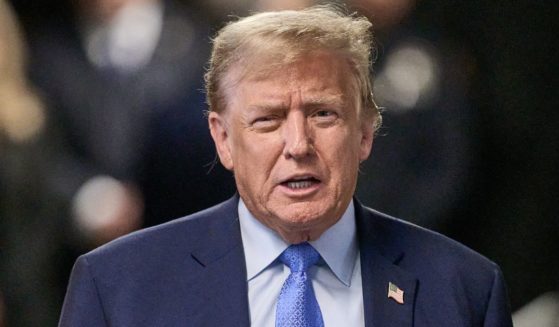Top General Issues Urgent Warning About US Ammo Supplies
U.S. and allied stocks of ammunition have fallen “dangerously low” with no sight of returning to acceptable levels any time soon, the commander of U.S. Air Forces in Europe said Wednesday, according to Breaking Defense.
Air Force Gen. James Hecker urged NATO allies to think seriously about munitions stockpiles and the number of fighter squadrons needed to maintain a strong deterrent in Europe at the Chief of the Air Staff’s Global Air & Space Chiefs’ Conference in London, Breaking Defense reported.
The defense industry has not been able to sustain the demands of American and allied forces, as well as feed the massive appetite of the Ukrainian forces in providing ammunition to Ukraine, he said.
“If you look at the U.S. itself — and let’s not just talk about the munitions we recently have given away to Ukraine — but we’re [at] roughly half the number of fighter squadrons that we were when we did Desert Storm,” Hecker said, noting that the U.K. has seen a similar decline in its air force. “So we don’t have nearly what we had at the heart of the Cold War.
“Now you add that we’re giving a lot of munitions away to the Ukrainians — which I think is exactly what we need to do — but now we’re getting dangerously low and sometimes, in some cases, even too low that we don’t have enough. We need to get industry on board to help us out, so we can get this going,” he added.
The U.S. has provided Ukraine with more than $41 billion in weapons and other warfighting aid since the Russian invasion of Ukraine, according to a Department of Defense fact sheet.
The Pentagon has pulled more than 2,000,000 155mm artillery rounds, 7,000 precision-guided 155mm artillery rounds and 500,000 105mm rounds, as well as tens of thousands of shells belonging to other munitions classes, primarily from existing stocks, to help Ukraine fight artillery-heavy battles.
Ukraine received cluster munitions from the USA
“We just received them, we haven’t used them yet, but they can radically change the situation [on the battlefield],” said Oleksandr Tarnavskyi, commander of the Tavria operational-strategic group of troops. All the details… pic.twitter.com/hO5mOLFuK4
— Lew Anno Suport #Ukraine 24/2-22 (@anno1540) July 13, 2023
“I think it’s very important that we kind of take stock of where we are in our weapons state across the 32 nations of NATO, and we’re getting way down compared to where we were,” Hecker said, according to Breaking Defense.
The Biden administration’s recent decision to include controversial cluster munitions, which can be fired by the numerous 155mm American-made systems Ukraine operates, in the latest aid package to Ukraine was driven at least in part by a lack of alternatives among U.S. stocks, DOD officials said.
“We don’t see this as a permanent solution but rather a bridge,” Under Secretary of Defense for Policy Dr. Colin Kahl said at a July 7 news conference.
The U.S. and Europe have begun investing in their defense-industrial base to boost production of 155mm rounds, he said. “That’s good news, and it’s starting to pay dividends, but the reality is we’re going to need to build a bridge to the point at which that capacity is sufficient on a month-to-month basis to keep the Ukrainians in the artillery fight.”
All content created by the Daily Caller News Foundation, an independent and nonpartisan newswire service, is available without charge to any legitimate news publisher that can provide a large audience. All republished articles must include our logo, our reporter’s byline and their DCNF affiliation. For any questions about our guidelines or partnering with us, please contact licensing@dailycallernewsfoundation.org.
Truth and Accuracy
We are committed to truth and accuracy in all of our journalism. Read our editorial standards.












